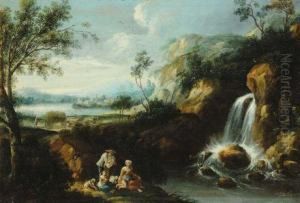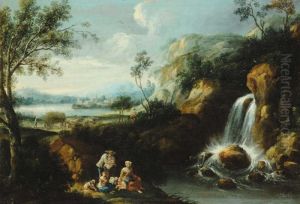Gaetano Zais Paintings
Gaetano Zais was an Italian painter of the Rococo or late Baroque period, born in 1709 in Castelfranco Veneto, which was then part of the Republic of Venice. Zais is known for his landscape paintings and contributions to the decoration of Venetian villas during the 18th century. His artistic training began under the tutelage of his father, who was also a painter. Later, Gaetano became a pupil of Antonio Balestra, who was among the leading Venetian artists of the time and had a significant influence on Zais' style and technique.
Zais' work is characterized by its lightness, elegance, and a penchant for idyllic landscapes. He was particularly skilled in creating frescoes that depicted airy and bucolic scenes, often filled with mythological figures and pastoral elements. His color palette was typically soft, featuring pastel tones that enhanced the dreamy and serene qualities of his compositions.
Throughout his career, Gaetano Zais collaborated with other prominent artists of the era, such as Giambattista Pittoni and Francesco Zuccarelli, who were also known for their landscape and decorative work. Zais' paintings can be found in various churches and noble residences across the Veneto region, demonstrating the demand for his work among the Venetian aristocracy.
Zais was also a member of the Venetian Fraglia or guild of painters, which further established his reputation as a respected artist within the Venetian art community. His works were influential in the development of landscape painting in Italy and were admired for their poetic charm and technical finesse.
Gaetano Zais passed away in 1784, leaving behind a legacy that captured the lighthearted spirit of the Rococo movement. His landscapes continued to inspire future generations of artists, and today, they provide valuable insight into the aesthetic preferences and cultural milieu of 18th-century Venice.

